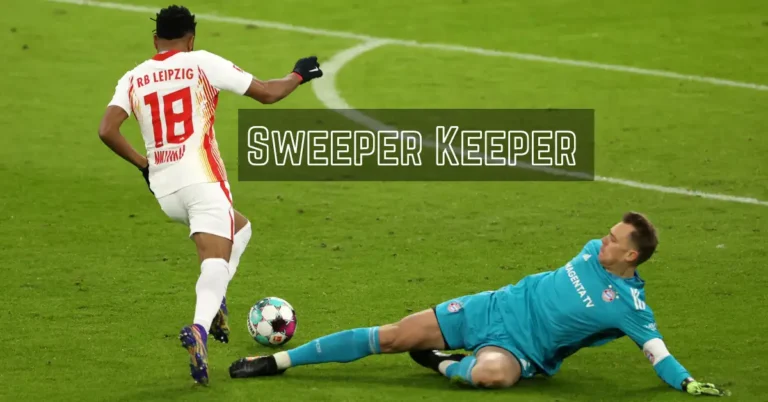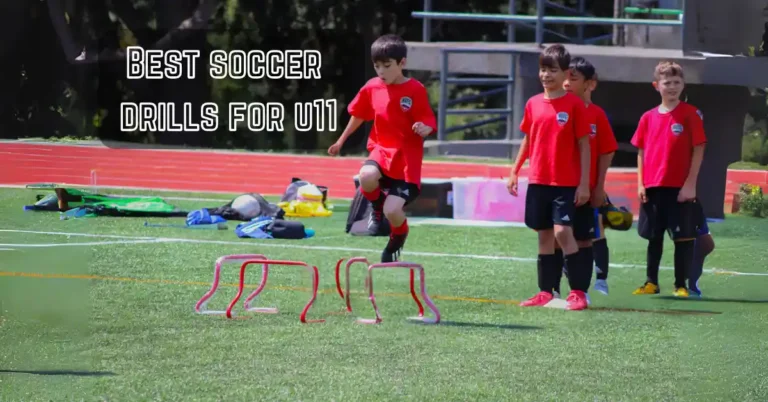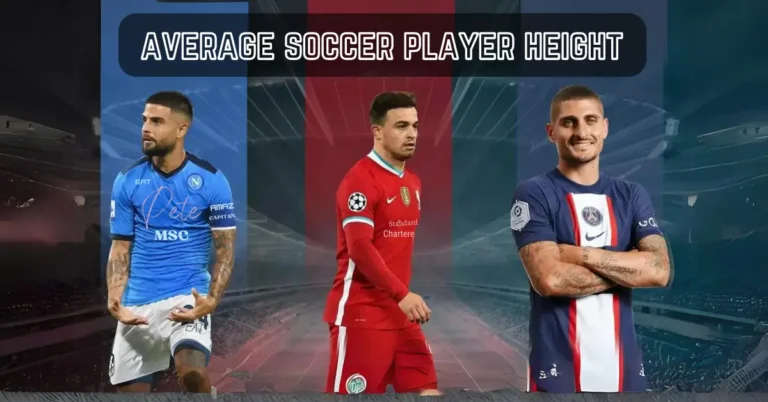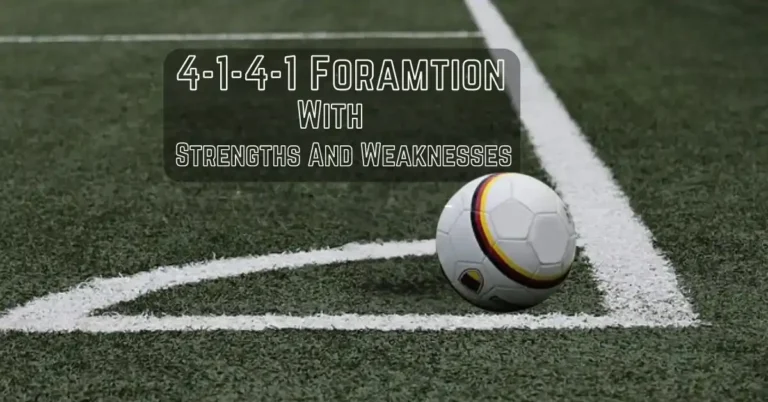5v5 Soccer Formations With Their Pros And Cons
5v5 soccer, also known as five-a-side futsal or mini-soccer. It is a variation of traditional soccer played with fewer players on each team just like 7v7 and 6v6. It is important to know 5v5 soccer and 5v5 soccer formations.
In 5v5 soccer each consists of five players. This format of the game is often played on smaller fields, and the reduced number of players results in a faster-paced and more dynamic style of play.
best 5v5 soccer formations
These are the three best 5v5 soccer formations you should know. You can elevate your game by choosing the right formations for you. let’s describe each formation separately with their pros and cons.
The 1-2-1 (Diamond) formation
The best 5v5 soccer formations include the 1-2-1. This formation provides one defender, two midfielder, and one forward player. A diamond-shaped midfield characterizes this formation, offering a unique tactical approach that can be both effective and challenging.
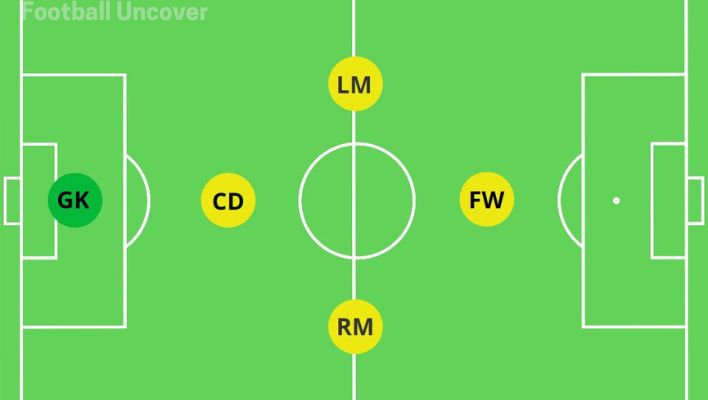
pros of 1-2-1 formation
Compact Midfield:
The diamond midfield in the 1-2-1 formation provides a compact structure in the center of the pitch. This can make it difficult for opponents to penetrate through the middle, limiting their passing options and forcing them wide.
Control of Possession:
With an extra player in the central midfield, teams using the 1-2-1 Diamond formation often enjoy superior control of possession. The diamond shape facilitates short, quick passes and triangular combinations, allowing for effective ball retention.
Attacking Overloads:
The formation encourages overlapping runs from full-backs and allows the attacking midfielder to link up with both the central striker and the wide players. This creates overloads in certain areas of the pitch, making it challenging for the opposition to defend effectively.
Versatility:
The 1-2-1 Diamond formation is versatile and can adapt to different phases of play. It can transition from a solid defensive shape to an attacking formation by pushing the full-backs forward and providing support to the central striker.
cons of 1-2-1 formation
Vulnerability on the Flanks:
The diamond-shaped midfield leaves the flanks exposed, making the team susceptible to attacks from wide areas. Opponents may exploit the space on the wings, especially if the full-backs are caught out of position or fail to track back effectively.
Limited Width:
The narrowness of the 1-2-1 Diamond can limit the team’s width in attack. This may make it easier for the opposition to defend, as they can compress the play and force the attacking team into congested areas.
Pressure on the Central Midfielder:
The central midfielder in the diamond may face intense pressure from the opposition, as they are often a key playmaker. If the opposing team successfully isolates and disrupts the play of the central midfielder, it can hinder the team’s ability to build from the middle.
Risk of Isolation for the Striker:
The lone striker in the 1-2-1 diamond may find themselves isolated if the team struggles to link play effectively. This can make it challenging for the striker to receive adequate support and contribute to goal-scoring opportunities.
the 2-2 (square) formation
2-2 is considered the best formation in 5v5 soccer formations. The 2-2 Square is an intriguing tactical setup that brings balance to the field. This formation provides 2 defenders and two midfielders, these midfielders also perform the duty of forward and midfielders.
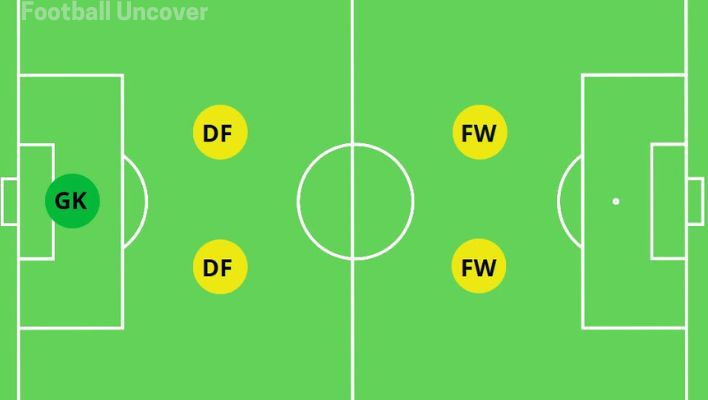
pros of 2-2 formation
Balance in Midfield:
The 2-2 square provides a balanced midfield structure with two central midfielders and two wide players. This equilibrium allows for effective ball circulation and control in the middle of the pitch, making it challenging for opponents to dominate possession.
Solid Defensive Foundation:
With two defenders and a defensive-minded central midfielder, the 2-2 square offers a solid foundation at the back. This defensive structure can help teams maintain shape and resilience, making it difficult for the opposition to break through.
Flexibility in Attack:
The two wide players in the formation offer flexibility in attack. They can stretch the opposition by hugging the touchlines or cutting inside to create goal-scoring opportunities.
This adaptability allows teams to exploit spaces and adjust their attacking approach based on the situation.
Options for Building from the Back:
The presence of two defenders and two central midfielders provides multiple options for building the play from the back. Teams can choose to play through the center or utilize the wide players to initiate attacks from the flanks.
cons of 2-2 formation
Limited Offensive Width:
While the wide players in the 2-2 square offer flexibility, the formation can still lack natural width in attack.
Compacting the central areas, especially if the wide players are not actively involved in the offensive phase, may make it easier for the opposition to defend.
Risk of Overcommitting Midfielders:
The balance in the midfield can sometimes lead to both central midfielders pushing forward simultaneously. This can create a vulnerability on the counter-attack, as the team may struggle to quickly transition from attack to defense.
Dependency on Full-backs for Width:
The formation often relies on the full-backs to provide width in attack. If the full-backs fail to get sufficiently involved or cannot push forward, the team may struggle to stretch the opposition’s defense and find gaps.
Susceptibility to Overloads:
The square shape in the formation can make the team susceptible to numerical overloads in certain areas of the pitch. Opponents may exploit these spaces, especially if the defensive or midfield units are pulled out of position.
the 2-1-1 (PYRAMID) formation
The 2-1-1 pyramid is a formation that combines defensive stability with offensive flexibility. The Pyramid formation brings a blend of defensive solidity and offensive flexibility to the soccer pitch, by providing 2 defenders, a midfielder, and a forward. 2-1-1 is included in the best 5v5 soccer formations.
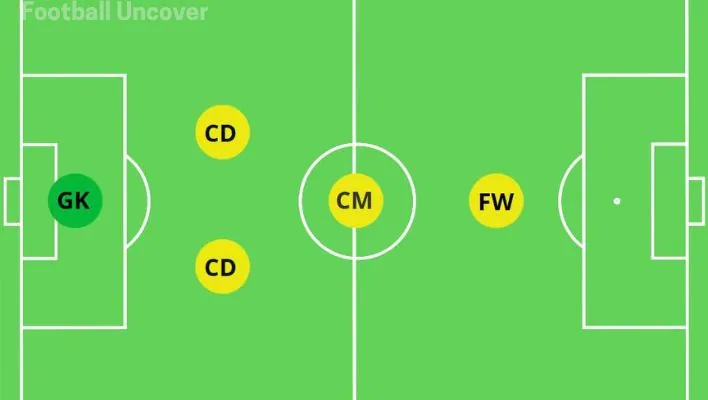
pros of 2-1-1 formation
Solid Defensive Foundation:
The 2-1-1 pyramid provides a solid defensive structure with two defenders at the base. This foundation can help thwart opposition attacks and create a resilient backline that is difficult to breach.
Controlled Midfield Presence:
The central midfielder in the formation acts as the linchpin, contributing to both defensive and offensive phases. This controlled presence in the midfield allows the team to dictate the tempo of the game and maintain possession effectively.
Versatile Offensive Options:
The pyramid shape of the formation allows for versatile offensive options. The two forwards can work in tandem with the central midfielder, creating triangles that facilitate quick passes and intricate plays in the final third.
Quick Transition from Defense to Attack:
The balanced structure of the 2-1-1 pyramid enables a swift transition from defense to attack. The defensive duo can provide a stable foundation, while the central midfielder serves as the link between defensive and offensive phases, facilitating seamless transitions.
cons of 2-1-1 formation
Susceptibility to Wide Attacks:
The narrow base of the pyramid can leave the flanks exposed, making the formation vulnerable to wide attacks. Opponents may exploit the spaces on the wings, requiring the team to rely on the full-backs to provide defensive cover.
Limited Defensive Cover in Wide Areas:
With only one central midfielder, the formation may lack adequate defensive cover in wide areas. The midfielder has to cover the vast spaces.
Dependency on Individual Performances:
The effectiveness of the 2-1-1 pyramid often depends on the individual performances of key players, particularly the central midfielder.
Risk of Isolation for Forwards:
The two forwards in the formation may risk isolation if the central midfielder is unable to connect play effectively. This isolation can make it challenging for the forwards to receive adequate support and create goal-scoring opportunities.
See also the 3v3 soccer strategy
FAQs
2-2 (square) formation is the best 5v5 soccer formation because of its balanced structure of offense and defense.
You can get better in 5v5 soccer skills by practicing regularly, focusing on close ball control, quick decision-making, and teamwork to excel in 5v5 soccer.
The 5v5 is called 5-a-side futsal. In 5v5 each team consists of 5 players.
No, there are no offsides in 5v5 soccer because of the small field and less number of players.
Yes, in 5v5 soccer there are 5 players on the field, one keeper, and others play in the field.
Yes, it’s possible to play soccer without a goalie, but it significantly changes the dynamics of the game, leaving the goal undefended.
conclusion
In the field of soccer, choosing the best formation is necessary before playing the game. There is no perfect formation for any game, the above formations are good but every formation has some advantages and also some disadvantages. You have to choose the right formation from these 3 unusual formations by analyzing the game situation. The formation has a great effect on the gameplay.


